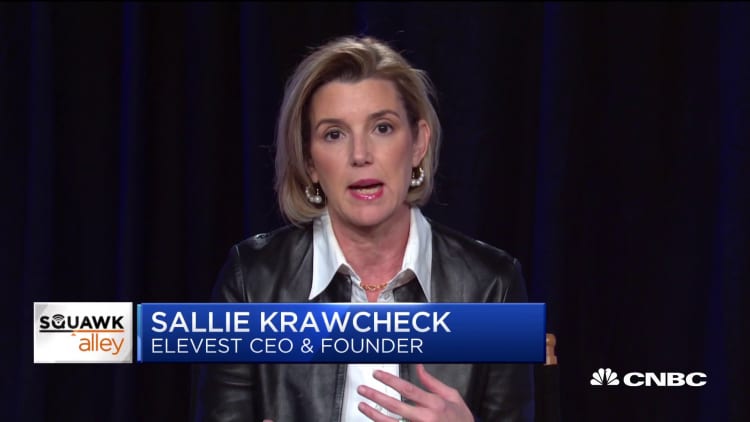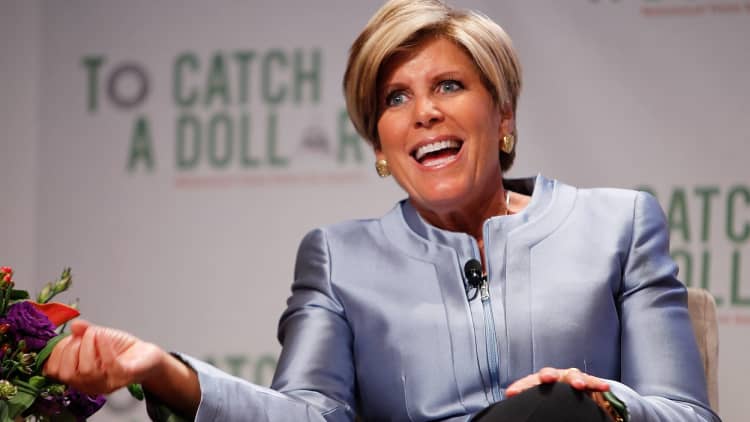When it comes to saving for retirement, many working women are falling short.
Almost one-fifth, or 19%, of working women have nothing saved for retirement, according to a new CNBC/SurveyMonkey Women at Work Survey. The poll surveyed 1,068 working women in the U.S. from Feb. 10-14.
"It's not because women don't save because they spend too much," said certified financial planner Avani Ramnani, who called the numbers "scary."
Instead, the problem stems from the fact that women still earn less than men, she said.
As of 2018, women earned 85% of what men make, according to a January Pew Research Center analysis.
"If you earned that much less — and it's not like your expenses are any fewer — that has a direct impact on the amount of money you have saved for your retirement," said Ramnani, director of financial planning and wealth management at Francis Financial in New York.
The survey also found that 14% didn't know how much money they had put away.
When it comes to race, black working women were less likely than their white counterparts to have nothing in retirement savings — 14% versus 22%. Yet, 24% of black women didn't know how much they had saved, compared to 11% of white women.
The lack of knowledge around the amount in savings could have to do with fear about whether it is enough, according to Lazetta Rainey Braxton, a CFP and co-CEO of New York-based advisory firm 2050 Wealth Partners.
"Women are saying, 'I'm socking money away, I don't know if it's enough — I'm just doing it,'" she said. "They don't know how to translate if it is enough."
'Just start somewhere'
If you haven't started saving for retirement yet, or are far behind, there are things you can do to get on track.
"Get on a program," Ramnani said. "Start with whatever you can. Ideally it's about 15% of your gross income, but just start somewhere."
Also, automate those savings and increase the amount saved every year.
"If the money doesn't hit your bank account, you won't spend it," she said.
If you have a 401(k) plan through work, find out if your employer matches your contributions. If so, at least contribute up to that amount so that your employer contributes, as well. If not, you are leaving money on the table.

Then, focus on your debt, said Braxton, a member of the CNBC Digital Financial Advisor Council.
Consolidate it into one low-interest credit card or loan. Take any money you save on payments into a cushion account, she advises.
As you get raises at work and possible bonuses, put those right into your cushion account, as well. The idea is to try to save at least three months' worth of living expenses.
"Challenge yourself for that first year," Braxton said.
As your financial life shapes up, increase your contributions to your 401(k) until you can reach the maximum allowed for the year: $19,500 for 2020, as well as an additional catch-up contribution of $6,500 if you are over age 50.
If you don't have a 401(k), open an individual retirement account or a brokerage account and start contributing.
Get educated
Women also tend to lack confidence around money, said Ramnani, whose firm specializes in working with women going through transitions.
That stems from a lack of knowledge surrounding their finances, even though they are "super smart" with great careers, she explained.
More from Invest in You:
Needle is moving on how millennial women save for retirement
Suze Orman's retirement strategies for those over 50
Women must take 4 key steps to shore up retirement
So, start talking to people about their investments and how they are making their money work for them.
"We find that once they get that education and they get that platform to talk about money," Ramnani said. "It makes them turn the corner and start looking at investments as a friend, an ally, which is what it is."
That lack of knowledge also may cause women to be very conservative when they invest, she said. They fear they'll lose money if they become aggressive.
Yet, women need to be more forceful because of the wage gap and because they generally are facing a longer lifespan than men, Ramnani said.
Figure out your end goal
While you may hear that you need to have $1 million for retirement, it really depends on a number of things.
Don't let that number scare you. Instead, just try to save 15% of your gross earnings, Ramnani said. Once you get comfortable with that, then look to figure out your number.
The best step to take is to hire a financial advisor, she said. While there are those who focus on high net-worth individuals, there are also many who cater to "regular working people."

Because many advisors charge only an hourly fee, you can get a financial plan in place to use as a road map without having to return for yearly appointments, Ramnani said.
If you do your financial plan yourself, check out online retirement calculators to determine how much you expect to have based on your contributions and expected returns.
Then, using your budget, determine how much you'll need each month. You can then see how long your money will last. If it isn't enough, you'll have to come up with a plan and boost your savings contributions.
"You are in control of your future," Braxton said. "It is not as hard as you think it is."
SIGN UP: Money 101 is an 8-week learning course to financial freedom, delivered weekly to your inbox.
CHECK OUT: 'The only type of travel isurance' you need if you're traveling during the coronavirus outbreak via Grow with Acorns+CNBC.
Disclosure: NBCUniversal and Comcast Ventures are investors in Acorns.






